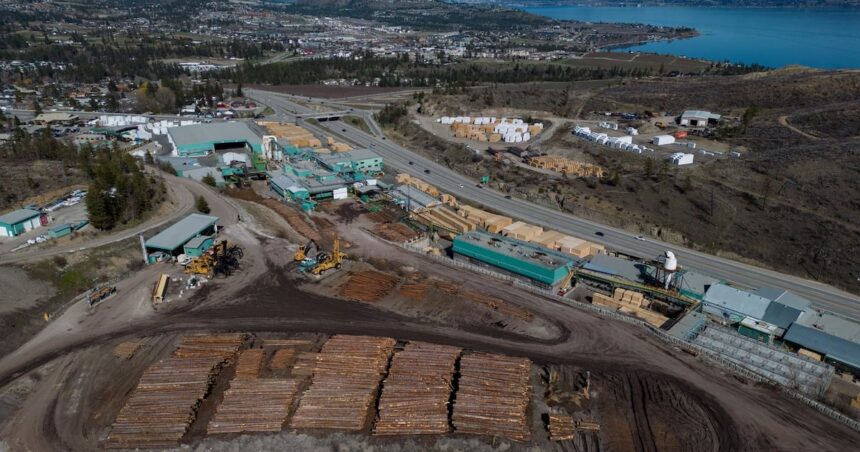The Biden administration’s latest move to slap Canadian softwood lumber with 20.56% anti-dumping duties marks yet another chapter in what feels like North America’s most persistent trade irritant. Having covered trade disputes from Brussels to Beijing, I’ve rarely seen one with such remarkable staying power—spanning administrations of both parties and defying multiple dispute resolution mechanisms.
Standing outside the Office of the U.S. Trade Representative in Washington yesterday, I watched Canadian officials arrive for what would prove to be another frustrating round of talks. “We’ve been here before, and we’ll likely be here again,” remarked one veteran Canadian diplomat who requested anonymity to speak frankly. “This cycle has become almost ritualistic.”
The Commerce Department announced the duties Tuesday, citing what they describe as unfair subsidization of Canadian producers—a claim Canada has successfully challenged multiple times at the World Trade Organization. The U.S. lumber industry, particularly producers in Oregon and Maine, have long complained that Canada’s provincial timber pricing systems amount to government subsidies that allow Canadian firms to undercut American competitors.
From the ground in lumber-dependent communities in British Columbia last month, I witnessed the human cost of these trade tensions firsthand. In mills across the province, uncertainty hangs in the air as heavily as sawdust. “These duties aren’t just numbers on paper,” explained Susan Yurkovich, President of the BC Lumber Trade Council. “They translate to job insecurity and economic hardship for thousands of families in rural communities.”
The timing couldn’t be more problematic for American consumers. Housing affordability has reached crisis levels across the U.S., with the National Association of Home Builders estimating that lumber costs alone can add upwards of $18,600 to the price of an average new single-family home. Randy Noel, a Louisiana-based builder I interviewed last week, put it bluntly: “When Canadian lumber gets hit with tariffs, American families pay the price.”
What makes this dispute particularly vexing is its persistence despite Canada’s repeated victories in international tribunals. The London-based dispute resolution panel established under the USMCA ruled in Canada’s favor just last year, yet implementation of that ruling remains stalled. The WTO has similarly sided with Canada multiple times, most recently in 2020.
The economic stakes are substantial. Canada exports approximately $8 billion worth of softwood lumber to the United States annually, according to Statistics Canada data. For perspective, that represents about 84% of Canada’s total softwood lumber production. Meanwhile, the U.S. can only supply about 70% of its domestic lumber needs, creating an unavoidable dependency that makes these tariffs all the more puzzling from a practical standpoint.
“This isn’t really about unfair trade practices,” explained Dr. Elena Martínez, trade economist at Georgetown University, during our conversation at her office overlooking the Potomac. “It’s about protecting a politically influential domestic industry—particularly in states that matter electorally—regardless of the broader economic consequences.”
The politics are undeniably complex. The U.S. Lumber Coalition, representing American producers, praised the Commerce Department’s decision as “necessary enforcement of U.S. trade laws.” Zoltan van Heyningen, the coalition’s executive director, told me via phone interview that “Canadian lumber benefits from significant government subsidies that create an uneven playing field.”
However, in meetings with White House economic advisors last week, construction industry representatives painted a different picture. “We’re facing historic housing shortages and affordability challenges,” said Jerry Howard, CEO of the National Association of Home Builders. “These tariffs directly contribute to higher housing costs at the worst possible time.”
The Canadian response has been predictably fierce. Mary Ng, Canada’s Minister of International Trade, issued a statement calling the duties “unjustified” and harmful to “workers, communities, and consumers on both sides of the border.” During a press conference in Ottawa that I attended remotely, Ng emphasized that “Canada will always defend its softwood lumber industry, including through litigation.”
This dispute has unique staying power partly because it touches on fundamental questions of sovereignty and resource management. Canadian provinces own approximately 94% of their forests and set stumpage fees—the prices companies pay to harvest timber on public lands. The U.S. contends these fees are artificially low, while Canada maintains they reflect market realities and regional forest management priorities.
Perhaps most frustrating for those seeking resolution is how the conflict has persisted despite multiple trade agreements designed specifically to address such disputes. Under both NAFTA and now the USMCA, special dispute resolution mechanisms have ruled in Canada’s favor, yet implementation of those rulings remains elusive.
As I’ve reported from lumber-dependent communities on both sides of the border, the human impact is clear. In places like Chetwynd, British Columbia, or Rumford, Maine, the uncertainty created by these recurring trade tensions ripples through entire communities. “The mill is our lifeblood,” explained Mayor Allen Courtoreille of Chetwynd during my visit last year. “When duties go up, everyone from the local hardware store to the diner feels it.”
With housing costs already squeezing American families and supply chains still recovering from pandemic disruptions, the timing of these increased duties strikes many analysts as counterproductive. The National Association of Home Builders estimates that duties on Canadian lumber have added nearly $9,000 to the price of a typical new home since they were first imposed.
As both countries prepare for their next moves in this seemingly endless dispute, one thing remains certain: the only predictable element in the U.S.-Canada lumber relationship is its unpredictability—leaving industries, workers, and consumers on both sides of the border struggling to adapt to a trade relationship that appears perpetually unresolved.






